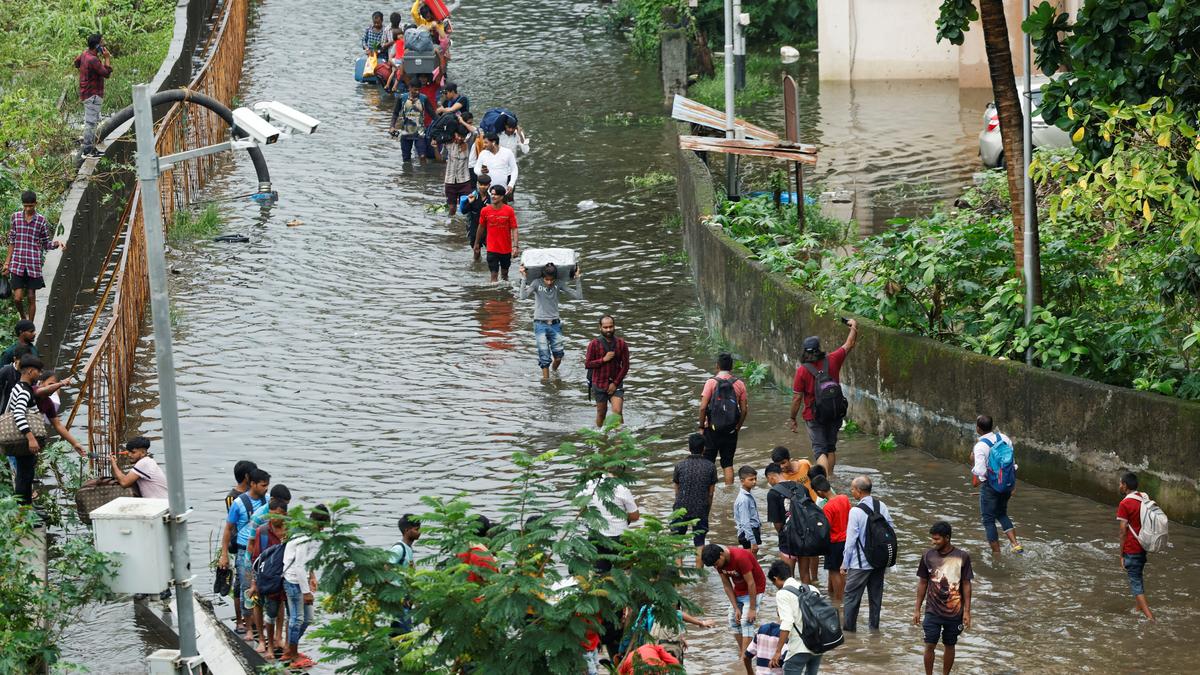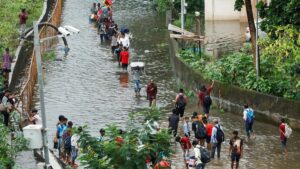Mumbai Monsoon: A Blessing and a Curse: Relief from Drought Marred by Infrastructure Woes

Mumbai Monsoon
Mumbai Storm: A Difficult Exercise Among Help and Frenzy
Mumbai, the monetary capital of India, inhales a deep breath of help as the sound of storm downpours replaces the persistent summer sun. However, this moan is frequently bound with a touch of misgiving. While the storms extinguish the city’s thirst and recharge its dry repositories, they can release tumult, helping Mumbaikars remember the fragile difficult exercise they should play out every rainstorm season.
The current year’s appearance of the rainstorm has been sensational. The underlying showers immediately swelled into weighty storms, uncovering the city’s weaknesses. Low-lying regions like Sion, Dharavi, and Malad became immersed, with spilling over channels spilling over and roads transforming into sloppy waterways. Traffic slithered to a stop, public vehicles faltered, and day-to-day existence came to a crushing end.
In any case, amid the burden, a feeling of trust gleams. The supplies, which had contracted alarmingly throughout the late spring, are at long last starting to overflow. The dry land swallows down the valuable water, offering a brief rest from the approaching water emergency. The current year’s storm downpours could be the distinction between a reasonable water circumstance and a dry summer one year from now.
Be that as it may, the help is fleeting. The very power that brings nurturing water likewise represents a critical danger. Mumbai’s geography, with its hillocks and steep slants, becomes helpless to avalanches during weighty deluges. The shaky presence of ghettos sticking to these inclines adds one more layer of stress. The power of the downpour can without much of a stretch transform these unstable residences into deathtraps.
Besides, Mumbai’s foundation, stressed by long stretches of disregard and overburdened by an expanding populace, clasps under the tension of weighty downpours. Potholes change into little lakes, spilling over channels become favorable places for mosquitoes, and feeble electrical lines hang problematically, representing a gamble of electric shock.
The Brihanmumbai Metropolitan Enterprise (BMC), the city’s urban body, ends up in a natural position – scrambling to moderate the effect of the rainstorm. Desilting channels, sending catastrophe reaction groups, and giving warnings become the things to get done. However, the sheer size of the test frequently leaves them overpowered.
Mumbaikars, as well, play a part to play in this yearly show. Remaining informed about weather conditions gauges, keeping away from overwhelmed regions, and complying with somewhere safe rules are urgent. Building a feeling of the local area and assisting weak neighbors with canning has a huge effect during these times.
Looking forward, the next few days will be a test for Mumbai. The force of the downpours will decide if the current year’s storm turns into a help or a debacle. The city needs a drawn-out system that goes past automatic responses. Overhauling stormwater waste frameworks, putting resources into the sturdier foundations, and migrating ghettos from high-risk regions are fundamental stages toward building a stronger Mumbai.
In any case, the arrangement isn’t infrastructural. Natural mindfulness and feasible practices are similarly significant. Safeguarding the city’s green cover, gathering water, and advancing capable garbage removal can fundamentally diminish the rainstorm’s wrath.
The storm downpours are a blade that cuts both ways for Mumbai. They bring both nurturing water and the potential for destruction. By recognizing this duality, putting resources into long-haul arrangements, and cultivating a feeling of local area readiness, Mumbai can change the storm from an enemy to a companion. This power feeds the city and supports its development.
Source: Hindustan Times
Also Read: CMF Phone 1 Launches









